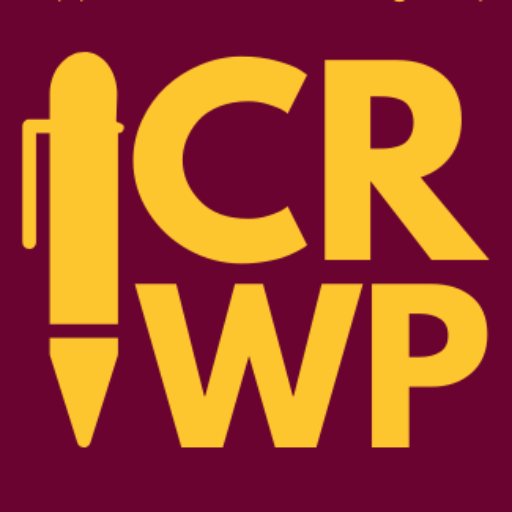On December 10, 2022, the Chippewa River Writing Project hosted a free continuity event: NCTE Comes to the CRWP. Teacher consultants from the CRWP who presented at the NCTE Annual Convention in November shared their presentations with us. This is the first post in a three-part series describing the presentations from our TCs.
Considering the challenges of revising a high school English curriculum in a high-performing, suburban school district, Sharon Murchie outlined a number of ways that she and her colleagues needed to come to terms with interpersonal tensions within the department, as well as other pressures that ranged from day-to-day teaching realities, the “traditions” and reputation of the district, the changing demographics, and questions about the changing nature of ELA curricula, especially the inclusion of YA literature. Also, recognizing Gholdy Muhammad’s point that “Culturally and historically responsive text selection has the potential to respond to students’ identities, skills, intellect, and criticality” (2020, p. 152), the team of teachers committed to meeting regularly to reconsider the department’s approach to teaching literature.
 As a way to begin this conversation within her department, Sharon and her colleagues employed the “What, So What, Now What” protocol from the School Reform Initiative as a way to name their concerns and to begin articulating group norms. Building from Emily Style’s “Curriculum as Window and Mirror” (1988) and Rudine Sims Bishop’s “Mirrors, Windows, and Sliding Glass Doors” (1990), as well as Learning For Justice’s interactive “Reading Diversity” tool, they framed a set of guiding questions:
As a way to begin this conversation within her department, Sharon and her colleagues employed the “What, So What, Now What” protocol from the School Reform Initiative as a way to name their concerns and to begin articulating group norms. Building from Emily Style’s “Curriculum as Window and Mirror” (1988) and Rudine Sims Bishop’s “Mirrors, Windows, and Sliding Glass Doors” (1990), as well as Learning For Justice’s interactive “Reading Diversity” tool, they framed a set of guiding questions:
- Why do we read certain literature in our classes?
- What literature “counts”?
- Whose voices are included?
- Whose are not included?
- What length and reading levels count in our English curriculum?
- How do we explore the role of authorship, character portrayal, content?
From this initial work, Sharon and her colleagues developed a set of actionable goals to review all of the courses that were being offered, to resequence the content and skills across all four grade levels, to focus on equity and representation within text selections, and to deeply interrogate why and how the department chose to (continue to) teach specific texts.

At this point, they also relied on the State of Washington’s Screening for Biased Content in Instructional Materials and New York University’s Metropolitan Center for Research on Equity and the Transformation of Schools’ Culturally Responsive Curriculum Scorecard. These tools allowed them to have more productive conversations about the texts they were using in their ELA courses, as well as to look for specific gaps in what the curriculum was offering — and needed to be strengthened. Sharon has also found that using these tools provides evidence-based / research-based documentation in case texts are challenged by the book banners. Some of the elements that they investigated were issues around gender, sexual orientation, family structure, ethnicity, social class, religion, and occupation, among numerous others.
In this process, Sharon and her colleagues also turned to resources for finding diverse books such as the rationales and text sets from #DisruptTexts, the Assessing Bias in Standards and Curricular Materials guide from the Great Lakes Equity Center, and a blog post from Jill Eisenberg on Achieve the Core’s Peers and Pedagogy site, “What Makes a High-Quality Diverse Text and How to Get These Texts Into Your Classroom.” Thinking about all of these resources, Sharon reminded us of how important it was for her students to feel seen in the texts. Both the written texts as well as film, podcasts, and other multimedia were crucial parts of what happened in the classroom.
As she concluded, she reminded participants in the session that there will be continued questions about what this work means for various stakeholders, the need for continually revised rationales, peer support for inviting new lenses for teaching, and, across all the courses, a need for vertical alignment. She ended with some questions that all might ask in their continued work to talk with colleagues and inform their ELA department’s work:
- What do we need to do right away?
- What can we put into place right away?
- What steps do we need to plan out for future years?
- What can we do within the next year? Beyond next year?
- What requests/supports do we need to ask for in this work?
For more on Sharon’s presentation, her slides are available as a “view only” document, and she can be reached at <sharon.murchie@okemosk12.net>.


Leave a Reply
You must be logged in to post a comment.